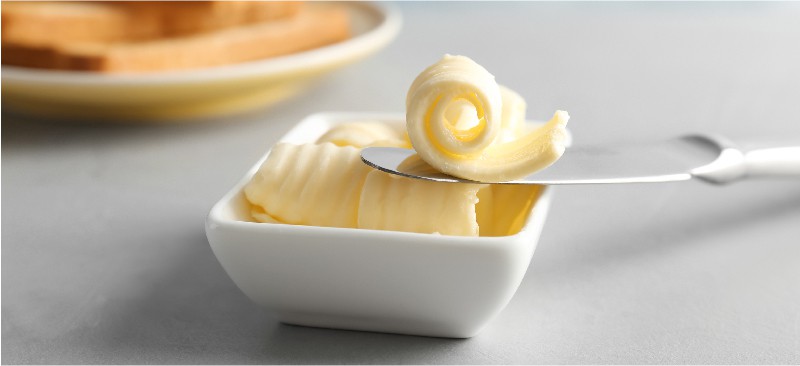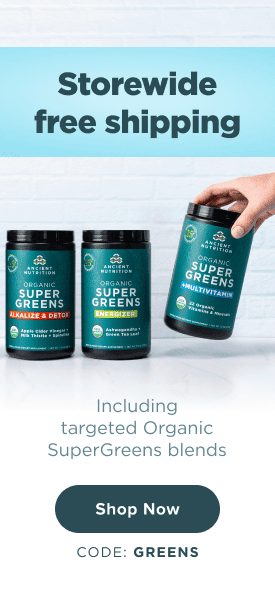This Dr. Axe content is medically reviewed or fact checked to ensure factually accurate information.
With strict editorial sourcing guidelines, we only link to academic research institutions, reputable media sites and, when research is available, medically peer-reviewed studies. Note that the numbers in parentheses (1, 2, etc.) are clickable links to these studies.
The information in our articles is NOT intended to replace a one-on-one relationship with a qualified health care professional and is not intended as medical advice.
This article is based on scientific evidence, written by experts and fact checked by our trained editorial staff. Note that the numbers in parentheses (1, 2, etc.) are clickable links to medically peer-reviewed studies.
Our team includes licensed nutritionists and dietitians, certified health education specialists, as well as certified strength and conditioning specialists, personal trainers and corrective exercise specialists. Our team aims to be not only thorough with its research, but also objective and unbiased.
The information in our articles is NOT intended to replace a one-on-one relationship with a qualified health care professional and is not intended as medical advice.
Margarine vs. Butter: Which Is the Healthier Option?
September 10, 2019

There’s a lot of confusion out there when it comes to things like butter — especially grass-fed butter — and cooking oils. From margarine to butter to coconut oil and olive oil, figuring out which ingredients to add to your kitchen cabinet can feel incredibly overwhelming.
Margarine is one of the most common ingredients out there — but also one of the most misunderstood. While many praise it as a heart-healthy, budget-friendly form of fat, others claim that it can clog the arteries, increase inflammation and pile on the extra pounds.
So is margarine healthy? This article will take a closer look at the health benefits and risks of margarine vs. butter to help you determine which one is the better option.
What Is Margarine?
Margarine is a type of condiment that is commonly used for cooking and baking. It’s also used as a spread and can help add a bit of flavor to dishes.
The history of margarine can be traced back to 1869, when it was invented during a shortage of butter in France. It was first created by French chemist Hippolyte Mège-Mouriès and was originally made using beef tallow and skimmed milk.
So what is margarine made of today? Most types are made of vegetable oils, which are high in polyunsaturated fatty acids.
These vegetable oils are chemically altered through processes like hydrogenation or interesterification, which makes them more solid and spreadable, with a texture similar to butter.
Other margarine ingredients may include food additives like emulsifiers and coloring agents, which are used to modify the texture and appearance of the final product.
Related: Is Corn Oil Healthy? Potential Benefits vs. Risks (Plus Healthy Substitutes)
What Is the Difference Between Butter and Margarine?
The main difference between margarine vs. butter is the way that the two ingredients are produced.
Butter is a dairy product made by churning milk. Meanwhile, margarine is a heavily processed ingredient made from vegetable oil that has been chemically altered in a lab.
The nutritional value of the two ingredients is also very different.
Because margarine is made of vegetable oil, it’s almost entirely composed of polyunsaturated fatty acids. Butter, on the other hand, is primarily saturated fat.
Certain varieties of butter, like grass-fed butter, are rich in several important nutrients as well, including vitamin K2. Studies show that vitamin K2 could play a key role in bone strength, heart health and cancer prevention.
Butter is also rich in several important fatty acids, including butyrate, omega-3 fatty acids and conjugated linoleic acid.
Compared to butter, margarine is much lower in these essential nutrients. It often contains some fat-soluble vitamins like vitamin A and vitamin E, along with omega-6 fatty acids and small amounts of sodium.
Related: What Is Shortening? Uses, Side Effects & Healthy Alternatives
Potential Benefits
Margarine is rich in polyunsaturated fatty acids, which are considered a heart-healthy form of fat. According to one study published in American Journal of Clinical Nutrition, swapping out saturated fats for polyunsaturated fats was associated with a lower risk of coronary heart disease.
Not only that, but it’s also rich in plant sterols and stanols. These compounds have been shown to reduce levels of bad LDL cholesterol, which is a major risk factor for heart disease.
However, although it may help lower cholesterol levels, other research has found that it may not be linked to a lower risk of heart disease.
Margarine is also a popular choice for those on a budget, as it’s typically much more cost-effective than butter or other types of cooking oils.
Many people also wonder: Is margarine vegan?
Margarine can be a good alternative to butter for those with specific dietary restrictions, including vegans. Because it’s made from vegetable oils instead of milk, it can also be enjoyed by those limiting dairy for personal reasons or health issues.
Is It Bad for You? Risks and Side Effects
Despite the potential health benefits of margarine, there are several important downsides to consider as well.
For starters, it’s a heavily processed ingredient. Studies show that eating more processed foods may be tied to a higher risk of cancer, heart disease and even death.
Is margarine plastic?
Although many have heard the expression, “margarine is one molecule away from plastic,” this isn’t completely true.
Many compounds share similar structures and chemical compounds, but even slight variations can vastly alter the final product. Therefore, while it is definitely a highly processed ingredient, it is not the same as plastic.
Another important consideration is the amount of omega-6 fatty acids that it contains. While we do need a mix of both omega-3 and omega-6 fatty acids in our diets, getting the right ratio of these fats is crucial to protecting against inflammation and disease.
Unfortunately, most of us get way too many omega-6 fatty acids in our diets and not enough omega-3s. Although some research suggests that a ratio of 1:1 is ideal for these fatty acids, the ratio in the average western diet is closer to around 15:1.
Some types of margarine also undergo a process called hydrogenation, which alters the texture and helps solidify the oils. Unfortunately, this process also results in the formation of trans fatty acids, which are a type of harmful fat that can contribute to chronic conditions, such as cancer, heart disease, obesity and diabetes.
Most manufacturers have started switching to other processes, like interesterification, to modify the texture, which is considered a much healthier alternative. However, it’s important to check the ingredients label carefully and steer clear of any products that contain hydrogenated fats.
How to Decide Which to Use
Although the two are used similarly in recipes, there are several different factors to consider when deciding between butter vs. margarine.
One of the key things that is different between butter and margarine is the fatty acid content. Butter is high in saturated fats while margarine is rich in polyunsaturated fats.
While polyunsaturated fats are often considered the healthier option between the two, some types of margarine also contain trans fats, which have been associated with a long list of health problems.
Butter, and grass-fed butter in particular, is less processed and high in many beneficial compounds, including vitamin K2, butyrate and conjugated linoleic acid. It also contains omega-3 fatty acids, which are integral to brain function, heart health and fetal development.
On the flip side, many prefer using vegan margarine products, especially if they are limiting consumption of dairy or animal products.
If you do decide to stick to butter, opt for grass-fed varieties whenever possible to maximize the nutritional value. Alternatively, if you select margarine instead, keep in mind that the healthiest varieties should be free of hydrogenated fats to help reduce your intake of trans fatty acids.
Related: What’s the Best, Healthiest Butter Substitute?
Final Thoughts
- What is margarine? It is a popular condiment that is made from vegetable oil, which undergoes hydrogenation or interesterification to help harden the texture.
- Butter, on the other hand, is a margarine substitute that is produced from churned milk and used in cooking and baking.
- There are several key differences between margarine vs. butter, especially when it comes to their nutrient profile and the fatty acids that they contain.
- Margarine is rich in heart-healthy polyunsaturated fats as well as plant sterols and stanols. It’s also budget-friendly and suitable for those with certain dietary restrictions.
- However, it’s also heavily processed and may contain high amounts of omega-6 fatty acids and trans fats, which can be harmful to health.
- Regardless of which product you choose when deciding between margarine vs. butter, it’s important to select grass-fed varieties of butter or margarine that is free of hydrogenated fats whenever possible.













